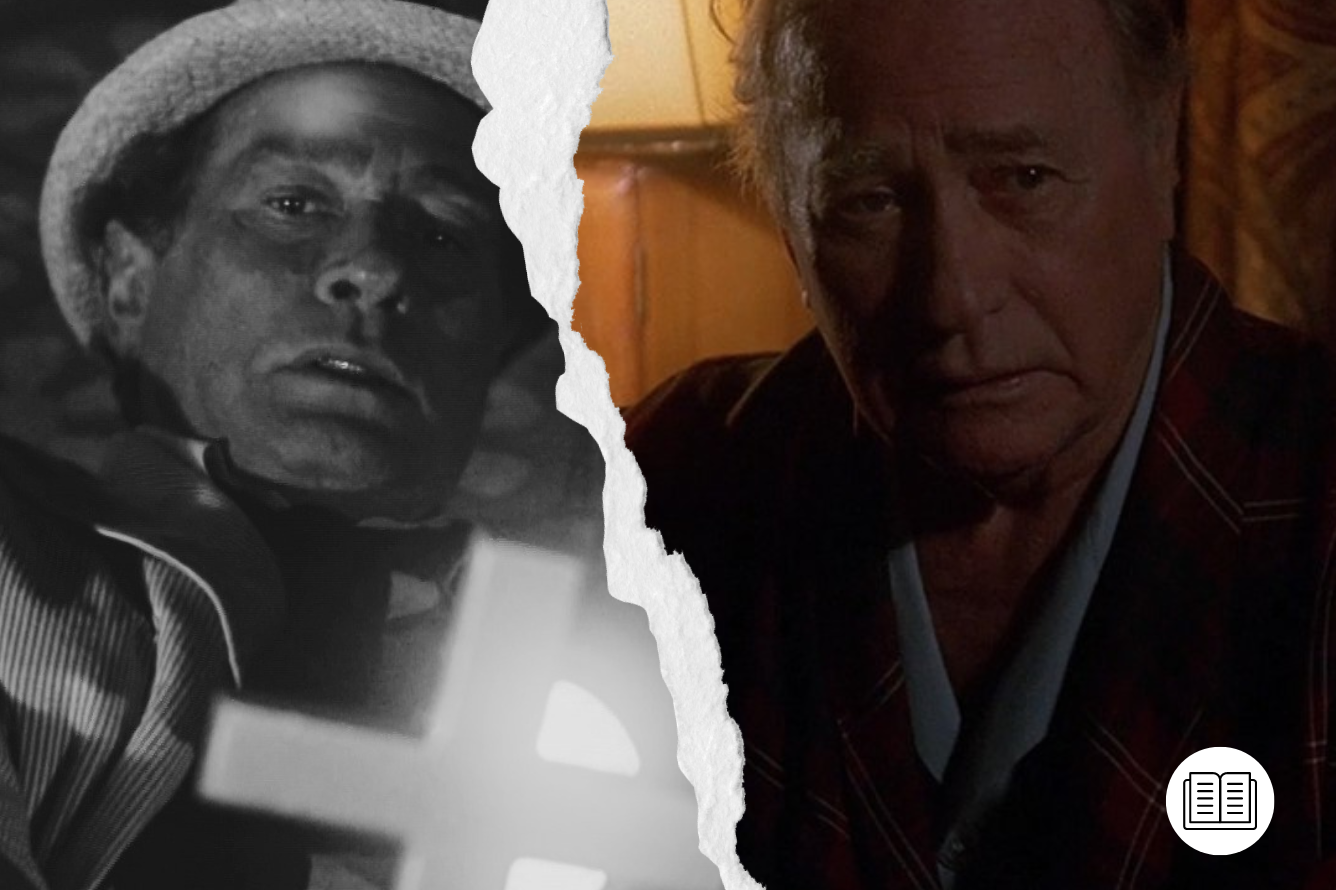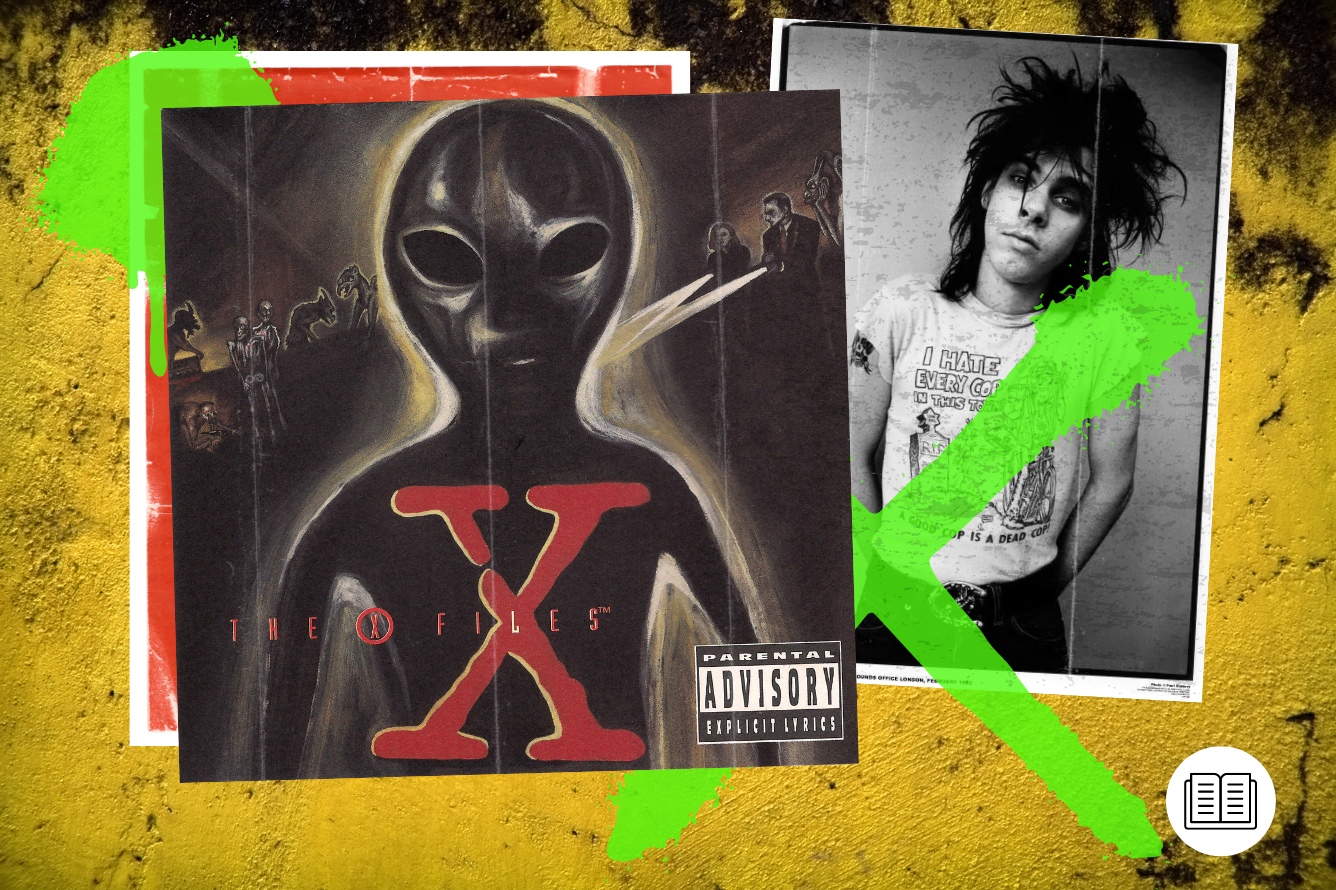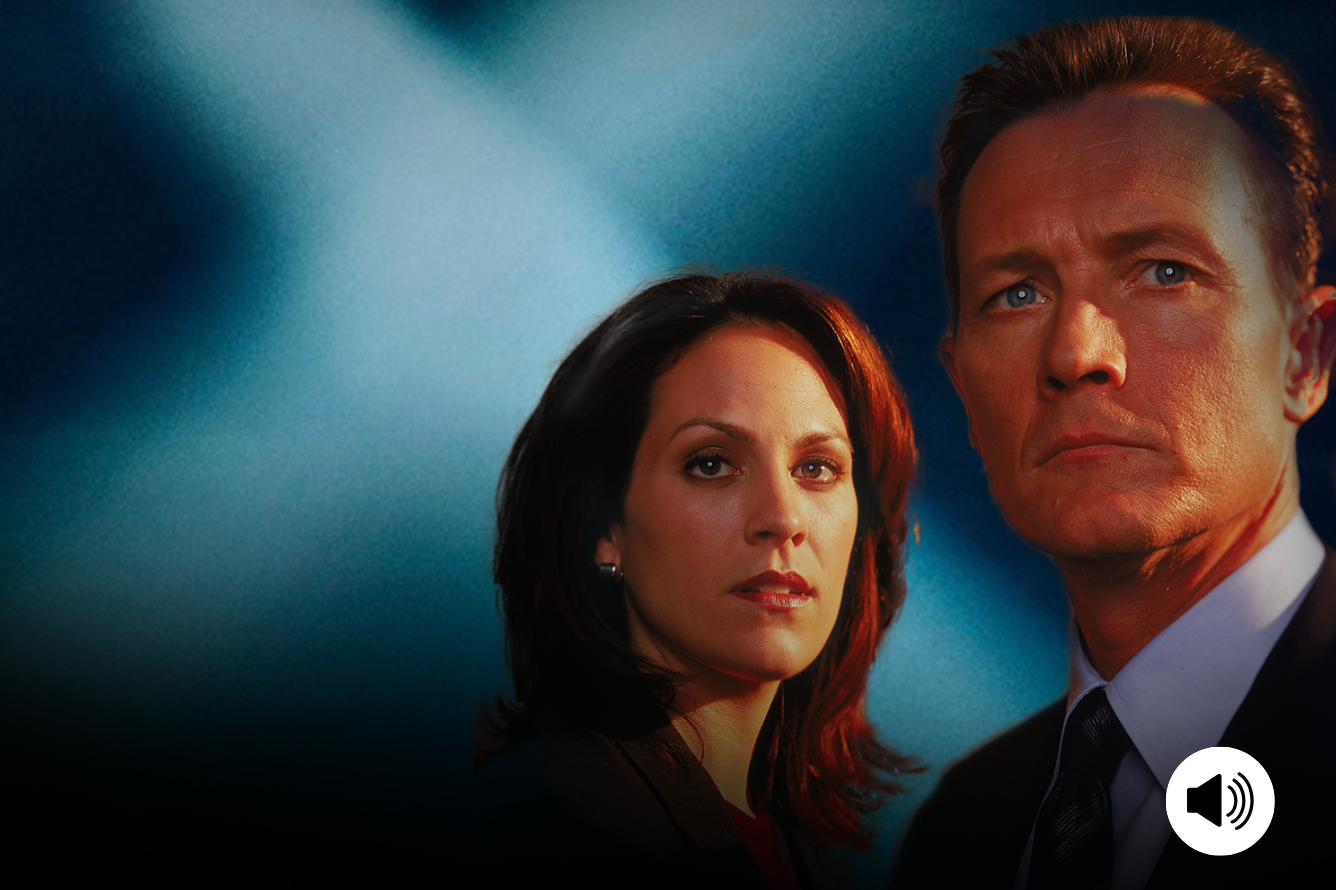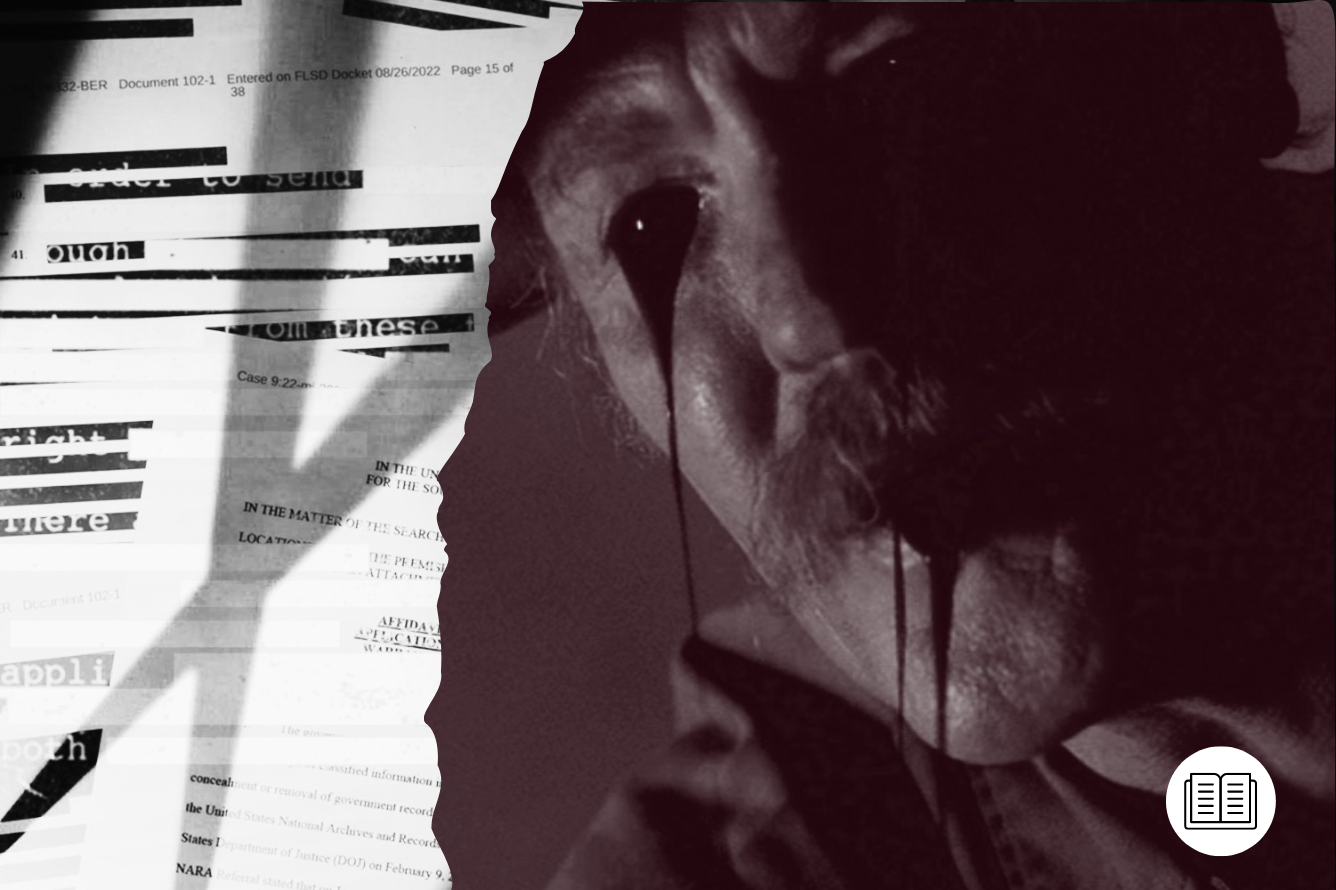Long-running television shows, particularly those in the sci-fi genre, are obsessed with their own origin stories. Doctor Who and Star Trek in particular consistently revisit and remix significant events relating to their origins, within both the continuity of the series (Star Trek: Strange New Worlds is a prime example of this) and in references to the real world (John Smith’s parents being ‘Sydney’ and ‘Verity’ in the Doctor Who episode ‘The Family of Blood’ springs to mind).
A particularly interesting example of this trope is in The X-Files, a more actively mythological series than most seeing as it spends 11 series in worldbuilding, whilst interrogating the ways in which ‘monsters’ are defined, concealed, or revealed—frequently doing this through going into the conspiracies that began the X-Files, such as the existence of the Syndicate. The show also actively situates itself within the sci-fi/horror televisual tradition, using the connections between shows to interrogate its status in the real world and reach into the pasts of its characters and writers. In episodes such as ‘Travellers (S5, Ep15) and ‘The Lost Art of Forehead Sweat’ (S11, Ep4), the series and people that inspired Chris Carter are remixed to provide a new lens through which to read Mulder and Scully’s world in relation to our own.
‘Travelers’ is overwhelmingly concerned with the origins of the X-Files, both department and show. The episode acts as a tribute to Howard Dimsdale, who was blacklisted by Hollywood in the 1950s for “Communist leanings”, suggesting that the ‘witch-hunt [of the 1950s] was actually a smokescreen to conceal something else’ [Andy Meisler]. Dimsdale had taught executive producer Frank Spotnitz and co-producer John Shiban during their time at the American Film Institute in Los Angeles, and the episode functions as a tribute to their teacher, who had recently died at the time of production.
Further Reading on X-Files and Howard Dimsdale
In The X-Files episode ‘Travelers’, Frank Spotnitz and John Shiban pay tribute to mentor Howard Dimsdale, a Hollywood screenwriter blacklisted by McCarthy | ‘Travelers’, Howard Dimsdale, and McCarthy's Red Menace

Dimsdale’s name appears later in the series as a newspaper staff writer in both The X-Files movie (1998) and The X-Files: I Want to Believe (2008). However, here Dimsdale’s script-writing alias ‘Arthur Dales’ is the name of the episode’s central character, and the two writers decided to take direct inspiration from Dimsdale’s stories of ‘paranoia, treachery, and double-dealing’ (as in work for Quincy and Mannix) when developing the episode. These are shown from the off in Dales’ character, as he is reluctant to discuss the case and attempts to make Mulder give up the case. When Mulder threatens a subpoena, Dales reveals all, the episode so reinforcing the concepts of governmental control and secrecy even in the framing.
Other in-jokes referring to the real world of the series are featured, most notably the names of production staff such as Paul Rabwin (here the singer ‘Paula Rabwini’) and the fiancé of Chris Carter’s executive assistant Mary Astadourian (‘Hayes Michel’). Situating the episode in the writers’ pasts opened up an avenue to ‘trace the roots of both Fox Mulder and the X-Files’—tribute naturally leading to flashback.
Neo-Noir in The X-Files Episode ‘Travelers’
The episode is first situated in the present day, as seeming serial killer Edward Skur (Garret Dillahunt) is shot by police, his last word being ‘Mulder’. A pre-series Mulder then travels to visit Arthur Dales, who had investigated Skur in the 1950s—and who had been present when Skur was reported dead in 1952. We then return to the past, to discover the truth. ‘Travelers’ is obsessed with the past, from the way in which it was filmed (Physical effects used to create the creature crawling out of Skur into his victim, and a bleaching job to give the film an aged feel) to explicitly saying the origins of why they’re called ‘X’ files in the first place, given by the closest thing the episode possesses to a Scully, secretary Dorothy Bahnsen, who says that they are filed under ‘X’ as there is more room there than under ‘U’ for ‘Unsolved’.

1950s tropes proliferate, including a nuclear family with a bunker in the backyard, fugitives and noir-leaning trenchcoats, bartenders, and conspiracies. Likewise, the alien experiments at the heart of the episode are more in line with 1950s science fiction such as Invasion of the Body Snatchers (1956) than The X-Files itself. However, the origins of the mood of the 1990s could also be seen in the 1950s, in which there was a resurgent interest (in films such as LA Confidential, for instance). Dark Skies, a 1960s-set X-Files-inspired alternate history show, had also delved into the conspiracy thriller-film noir genre.
David Ansen wrote for Newsweek in 1996:
“Why are we in this somber mood? Crime is down, Wall Street is up and saturated fats have replaced communism on our worry list. But, of course, it was during an age of peace and prosperity that film noir got its start. During the Depression and war years, Hollywood had diverted a besieged nation with escapist entertainments and patriotic cheer. But with victory, our storytellers let down their psychic guard, and what poured out was dark and troubling fantasies of a dangerous, corrupt new world where the lines between good and evil got crossed. The streets were rain-slicked, fogbound, menacing; the heroes deracinated and weary; the women ambiguous, sexy, and treacherous.”
Film noir, then, looked for its enemies: much as the US in ‘Travelers’ looks to define itself against Communists and Fox Mulder looks for enemies or allies under the lid of secrecy. ‘Travelers’ also plays with the show’s origins in the culture of the 70s—from Watergate to Kolchak: The Night Stalker to The Parallax View (1974)—by referencing Alien (1979), especially in the way the creature emerges from Skurr and attacks his victims. The era-specific influences/origins of the show so tap into America’s present anxieties and offer playful opportunities for set design.
How ‘Travelers’ Plays with the History of Television
The origins of television itself also play a large role in the episode. In the first era of mass television ownership, the medium almost becomes a character in and of itself: much of our exposition is framed through newsreel footage encountered on the television, from our first glimpse of Mulder’s father (Dean Aylesworth) to the real-life plots of Roy Cohn (David Moreland). As Michels is murdered by Skur/the creature, the camera pans to newsreel footage of Cohn and then the ad break—two generations of television colliding in real-time. ‘Travelers’ further ties into television history by acting as what Emily VanDerWerff described on AV Club as a “backdoor pilot for [a show] that never happened,” as seen in 1960s TV shows such as Star Trek (‘Gary Seven’ in particular) and television movies such as Kolchak: The Night Stalker (which we’ll come to presently). The episode is so interested in the origins of its own medium, and how this influences both its style and the decisions the characters therein make.

However, ‘Travelers’ is both parts of and divorced from The X-Files’ wider mythology: multiple episodes from season three onwards emphasized that the mystery resulted from actions at the end of the Second World War, and whilst ‘Travelers’ reflects that post-war paranoia it does not tie into the wider elements of continuity. The closest it comes to it is in exploring Mulder’s origins: he is shown wearing a wedding band. David Duchovny wanted to wear the band as he had recently gotten married, but Chris Carter emphasized that if there were any episodes that had taken place “seven years ago, you’ll have to be married.” Duchovny responded that few episodes would take place seven years in the past, ironically as this was one of many flashback episodes in the series. A young Bill Mulder oversees the procedure turning Skur into a parasitic monster, as part of the State Department (as established in The X-Files episode ‘Apocrypha’ – S3, Ep16), but is also under the command of real persons such as Roy Cohn and J. Edgar Hoover, who maintain their historical personalities but are shown as even shadier. Mulder is shown to already have seeds of discontent over the acts he participates in—the first glimpses of what will lead him to leave the Syndicate, retire, and be killed. He tells Dales that “someone needs to know the truth,” but fails to fully commit to investigating the unsolved—instead it is Dales who takes up the mantle, the father of Fox Mulder’s career if not himself. It is in this way more of an investigation into the tropes that defined The X-Files as a series, and the characters driving these tropes, than the conspiracy itself, naming of the files aside.

In doing so, ‘Travelers’ goes into the origins of those tropes, many of which emerged from the short-lived series Kolchak: The Night Stalker (1974-5). Featuring Darren McGavin as hard-nosed journalist and part-time paranormal investigator Karl Kolchak, it is one of the series that defined Chris Carter’s approach to his own series, with Robert Shearman going as far as to call McGavin the series’ “spiritual father.” McGavin was requested for the part of Dales by Chris Carter, having been asked to appear previously in episodes such as Senator Matheson in ‘Little Green Men’ (S2, Ep1) and as Mulder’s father. Both these roles echo Dales: Matheson is especially sympathetic to Mulder’s work, assuring him he will hold off a UFO capture team until Mulder can sort out the situation, Matheson is in turn named after Richard Matheson, the science-fiction writer best known for I Am Legend (1954).
Casting director Rick Millikan noted in The Complete X-Files: Behind the Series the Myths and the Movies (2008): “McGavin was Chris's inspiration for writing this series. He always had Darren in mind to use somewhere, and that was really his doing. He said ‘I want Darren McGavin for this,’ and he happened to be available, and we got him.” Consequently, intentionally or not, this casting draws our attention to the parallels between Kolchak and Mulder, Kolchak and Dales, and Kolchak and The X-Files.









